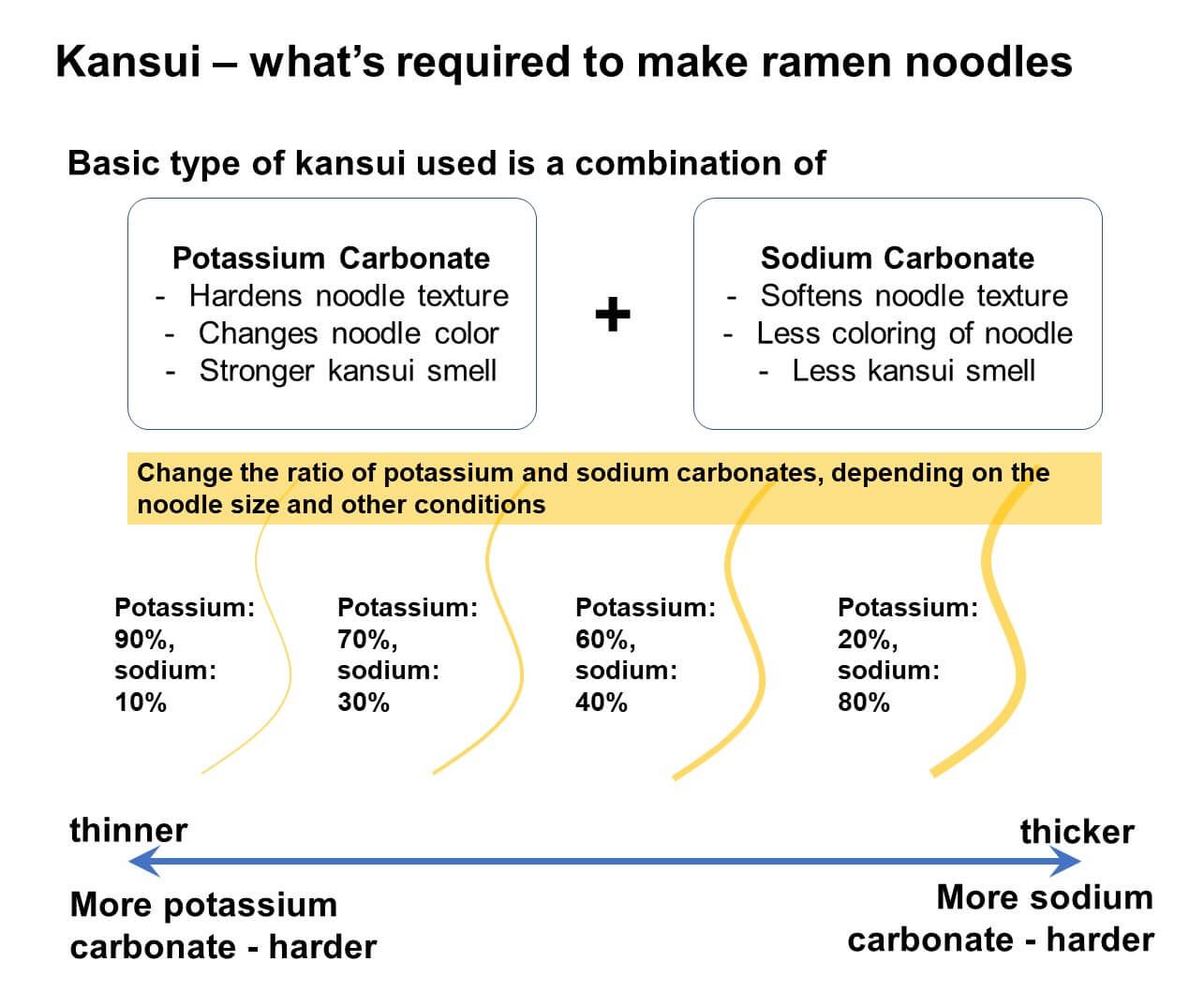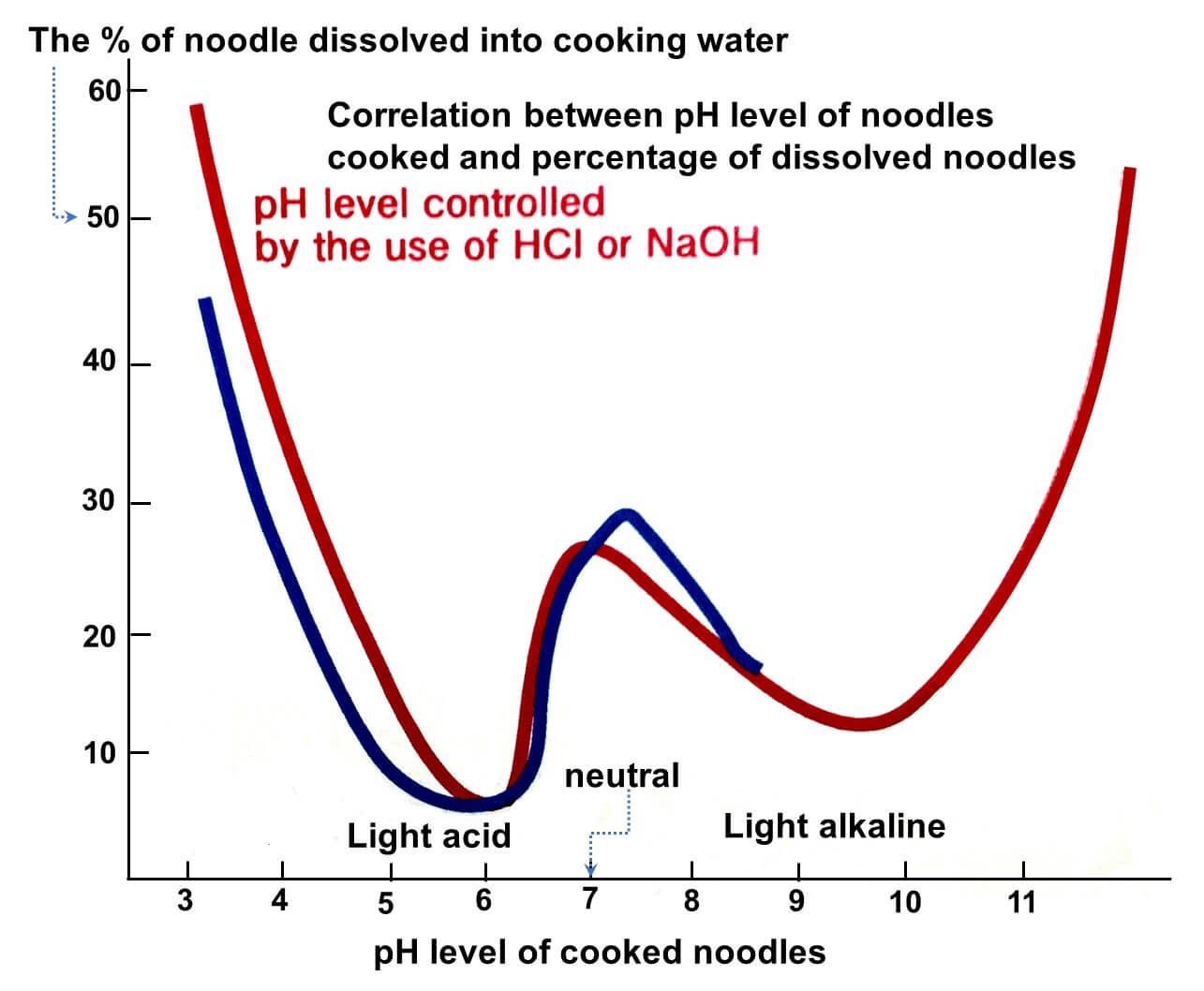
About kansui (brine)
In general, thin ramen noodles have weak texture physically due to its fineness, so in addition to using wheat flour with high protein content, kansui also reinforces the hardness by increasing the potassium carbonate content.
On the other hand, for the thick ramen noodles, cooking time is longer, and the hardness tends to be too much, so use flour with low protein content and balance the hardness with high sodium carbonate ratio. (For ramen noodles in general, the ratio of potassium carbonate to sodium carbonate is around 7: 3)
The famous, Hakata Ramen noodles are thin and hard. So, you should increase the amount of potassium carbonate when making it.
On the other hand, for the thick ramen noodles, cooking time is longer, and the hardness tends to be too much, so use flour with low protein content and balance the hardness with high sodium carbonate ratio. (For ramen noodles in general, the ratio of potassium carbonate to sodium carbonate is around 7: 3)
The famous, Hakata Ramen noodles are thin and hard. So, you should increase the amount of potassium carbonate when making it.
kansui is an alkaline substance, making noodles alkaline

Kansui makes noodles to keep longer by changing the PH level. And, it brings out a unique flavor and texture. Although there is a process of aging/resting in the manufacturing process of ramen, good dough can not be made if simultaneously breeding bacteria in the aging process. “Promote good resting while suppressing decaying of dough.” The predecessor overcame this problem by kneading kansui into dough, raising the pH to 9 or more, and making it alkaline. Kansui also plays a role of preventing noodles from melting into cooking water. It keeps noodles from dissolving into boiling water by making noodles and cooking water lightly alkaline, and this helps improve the yield of cooked noodles.
Note: Although udon and soba are also noodles, because they are acid foods, they shouldn’t be cooked together with ramen noodles in the same pot. Because we are using kansui to make ramen noodles, noodles and boiling water are lightly alkaline (pH 9 ~ 10), boiling and melting of noodles are relatively small in this PH range. And, it also helps shorten cooking time of noodles.
Note: Although udon and soba are also noodles, because they are acid foods, they shouldn’t be cooked together with ramen noodles in the same pot. Because we are using kansui to make ramen noodles, noodles and boiling water are lightly alkaline (pH 9 ~ 10), boiling and melting of noodles are relatively small in this PH range. And, it also helps shorten cooking time of noodles.

salt used in ramen noodles
When making noodles with flour, we generally make them by adding not only flour and water, but also salt.
The effects of salt on ramen noodles are as follows.
The effects of salt on ramen noodles are as follows.
- Tighten the gluten of the flour and increase the elasticity of the dough.
- Suppress the activity of proteolytic enzymes contained in wheat flour.
- Preservative effect by suppressing activity of germs
- Make the flavor of noodles better.
- Tighten the gluten of dough.
- Add some salty taste to the noodles.

So, water, kansui and salt play important roles in making great ramen noodles from scratch. The knowledge of the ingredients helps you pick better ingredients suitable for your craft ramen noodles and correct the mistakes you may make in your actual production.
Learn the Art of Ramen Making
We will help you cultivate your ramen skills and techniques and unleash your ramen genius hidden in you. You can start investing today and create your own ramen business that may grow and thrive in the near future.

